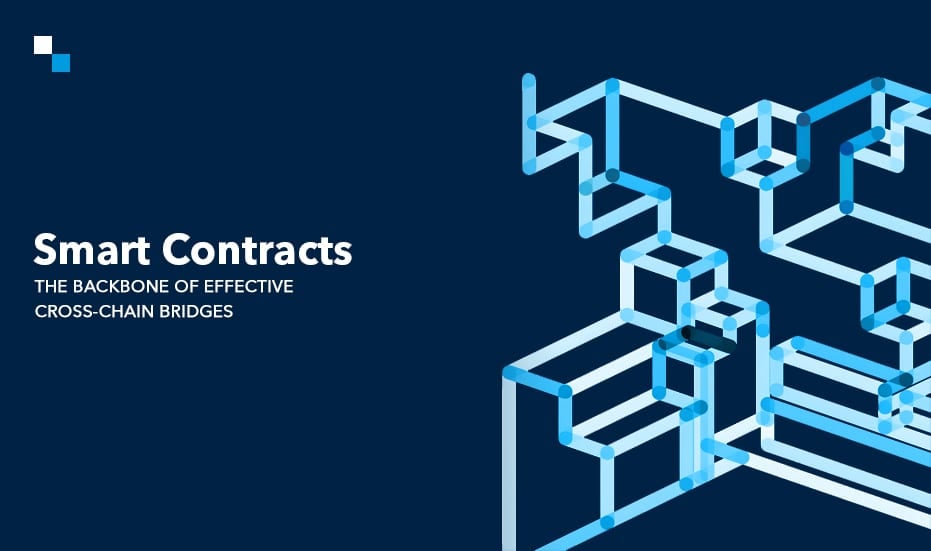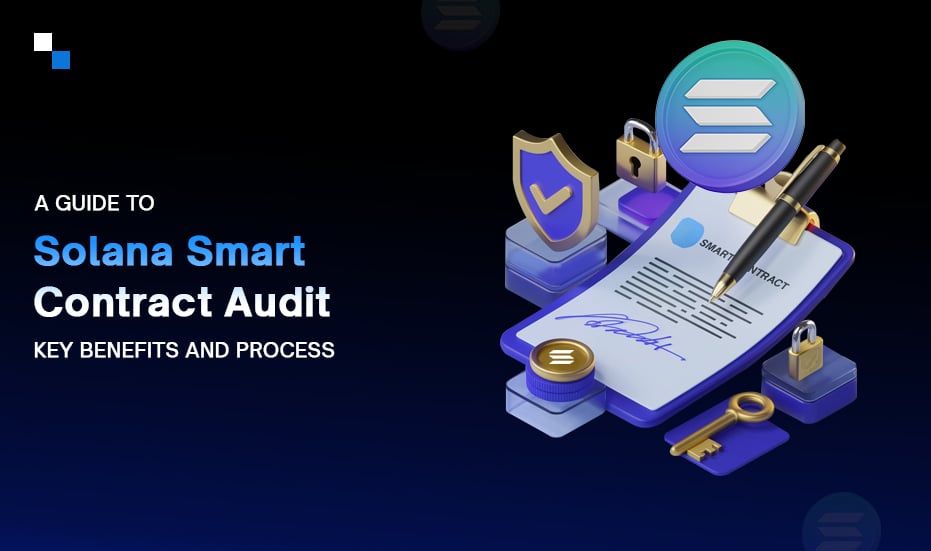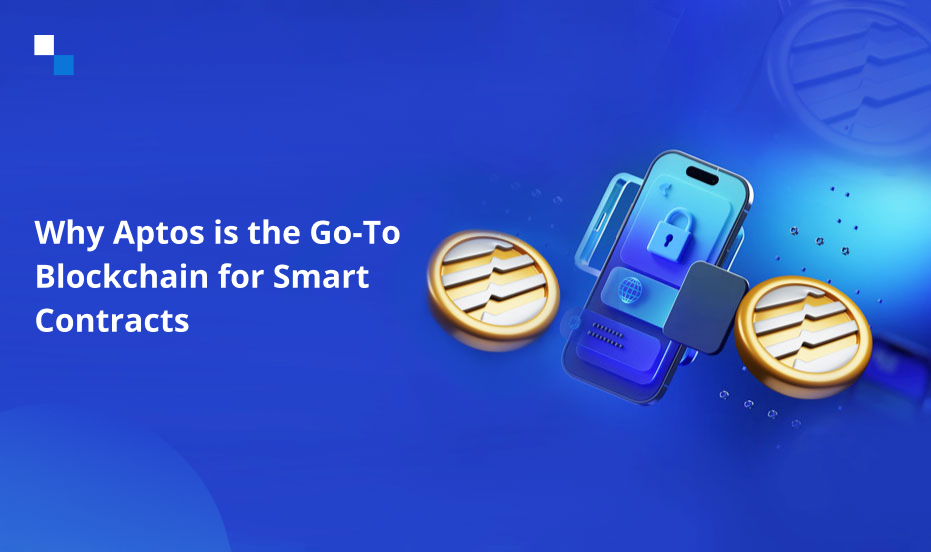
Gold Tokenization Case Study: How Antier Assisted a Global Bank with Its Tokenization Endeavor
September 12, 2024
Mitigating MEV Exploits: A Guide for Crypto Exchange Software
September 13, 2024Cross-chain bridges use smart contracts to realize the interaction between two independent blockchain systems. Smart contracts are basically self-executing agreements based on an if-then originality that enables safe and transparent transfer or exchange of assets or information across various blockchains.
Smart Contract-based cross-chain bridges are capable of devising decentralized and automated processes for confirming transactions that guarantee the security of assets in their movement across blockchains with no intermediary.
Cross-chain bridges with smart contracts have great relevance in facilitating cooperation and communication between islands of various blockchains to permit the seamless transfer of value across networks. The blockchain world is growing, and for it to keep on growing, cross-chain bridges and smart contract integration will be highly important to enable further developments down the line, thus allowing seamless flow within the decentralized networks.
Understanding Cross-chain Bridges
Cross-chain bridges are a class of dApps that enable users to move assets from one blockchain into another. Usually, this works by implementing a token lock or burn scheme on the source blockchain and the minting or unlocking of an equivalent amount on the destination chain to keep supply across networks.
You cannot separate smart contracts in cross-chain bridges, as both these go hand in hand. Here is a general breakdown of how those systems work:
- Lock and Mint: The user can send his assets to an on-chain smart contract from A when transferring his assets from Blockchain A to Blockchain B. This on-chain contract on A will lock the assets and subsequently trigger its counterpart smart contract on-chain B to mint the equivalent amount of the wrapped token.
- Verification: Smart contracts on both chains communicate via oracles or relay networks on the validity of the transaction.
- Token Release: Once verified, the wrapped tokens will be released to a user’s wallet on Blockchain B.
- Burning and Unlocking: The user sends the wrapped tokens back to the smart contract in question on Blockchain B to return assets to the original chain. The wrapped tokens are burned and, in turn, send a release signal for the original assets from the lock imposed on Blockchain A.
During the process, cross-chain bridge solutions utilizing smart contracts allow users to make sure the total supply of assets on both chains remains equal and thus maintains the integrity of the bridged assets.
The Role of Smart Contracts in Cross-chain Bridges
Cross-chain bridges use smart contracts to ensure the security and reliability of the asset transfer process. These are self-executing contracts, which define rules and conditions for any asset transfer to one blockchain from another.
- Asset Locking/Burning: Smart contracts are designed to either lock or burn tokens on the source blockchain, thus temporarily or permanently taking them out of circulation.
- Asset Minting/Unlocking: Smart contract-based cross-chain bridges will help in minting or unlocking equivalent tokens based on the tokens locked or burned on the source blockchain.
- Validation and Verification: Smart contracts ensure that the transfer across chains is valid and very secure, meaning the total supply of tokens does not change. This is validation and verification.
- Incentive Mechanisms: Some use smart contracts to deploy mechanisms like revenue sharing or liquidity mining to incentivize users to come and economically participate in the bridge ecosystem.
Implementation of Smart Contracts in Cross-chain Bridges- Best Examples
Several projects have developed cross-chain bridges with smart contracts to tap into the power of smart contracts for transferring assets across blockchains.
Here are some of the best examples:
- Chainlink CCIP: CCIP stands for Cross-Chain Interoperability Protocol, a Chainlink-developed blockchain-agnostic and fully decentralized cross-chain bridge for the protection of blockchains through smart contract interaction. CCIP allows for the communication of arbitrary data, tokens, and commands across on-chain environments.
- Axelar: It’s a decentralized, cross-chain communication network that uses smart contracts to provide the ability for the transfer of assets and information across various blockchain networks. It utilizes smart contracts so that validation and execution of transactions across chains can be done accordingly.
- Wormhole: Wormhole is the perfect example of the integration of smart contracts in cross-chain bridges for extensive blockchain networks such as Ethereum, Solana, and Terra. Its smart contracts are tasked with locking and minting tokens across chains.
- Polygon Bridge: This is a bridge between the Ethereum mainnet and the Polygon network, which, until recently, was known as Matic. The Polygon Bridge uses smart contracts to lock up assets in Ethereum, simultaneously minting their respective tokens in Polygon.
- Avalanche Bridge: The Avalanche Bridge enable transfer of assets between Ethereum and the Avalanche network.
- Harmony Bridge: Harmony’s bridge allows cross-chain transactions between Harmony and other major blockchain networks like Ethereum, Binance Smart Chain, and more.
- HOP Protocol: HOP is envisaged as a scalable, rollup-to-rollup generalised token bridge that will allow fast transfers between Ethereum and various Layer 2 solutions.
Benefits of Smart Contracts in Cross-chain Bridges
Cross-chain bridges and smart contract integration offers several benefits:
- Security: Smart contracts guarantee that interoperability transactions occur securely, transparently, and without fraud to ensure the accomplishment of the agreement conditions.
- Automation: Smart contracts work in automating cross-chain transaction execution, hence limiting human intervention and reducing most risks that come with human errors.
- Flexibility: Smart contracts can be tailor-made for various blockchain networks, thus enabling their utilization in customized cross-chain bridge solutions.
- Scalability: It can be deployed to multiple nodes of the blockchain network for the efficient execution and processing of cross-chain transactions.

The Future of Cross-chain Bridges and Smart Contract Integration
Since blockchain technology is continuously improving, we are very likely to see advancement in cross-chain bridge solutions utilizing smart contracts in the near future.
Some possible further developments:
- Multi-chain Bridges: Solutions that can bridge multiple blockchains at once will turn blockchains into an interconnected web.
- Enhanced Security: Enhanced security protocols and auditing processes to mitigate the risks associated with smart contract vulnerabilities.
- Standardization: Creation of Industry standards with regard to cross-chain communication and implementation of smart contracts.
- Integration with DeFi: Gradiently deeper integration with the suite of DeFi protocols, including cross-chain lending, borrowing, and yield farming.
- Layer 2 Solutions: Integration of layer 2 scaling solutions that will further enhance efficiency and cut the cost of cross-chain transactions.
Conclusion
The incorporation of smart contracts in cross-chain bridges has made the easy conduction of asset transfers across many blockchain networks much more efficient and secure. Cross-chain bridges and smart contract integration ensure that transactions are automated and transparent. Hence, cases of fraud become minimal, which helps in building trust among users. As the demand for cross-chain bridges with smart contracts increases, partnering with an experienced provider can make quite a difference.
Antier has expertise in providing cross-chain bridge solutions utilizing smart contracts, ensuring the scalability, security, and efficiency of technology in your project. We have expertise in building cross-chain bridges and integrating smart contracts. We support you in mapping the complexities of blockchain interoperability and unleashing new opportunities within the decentralized landscape. Get in touch with us now!



